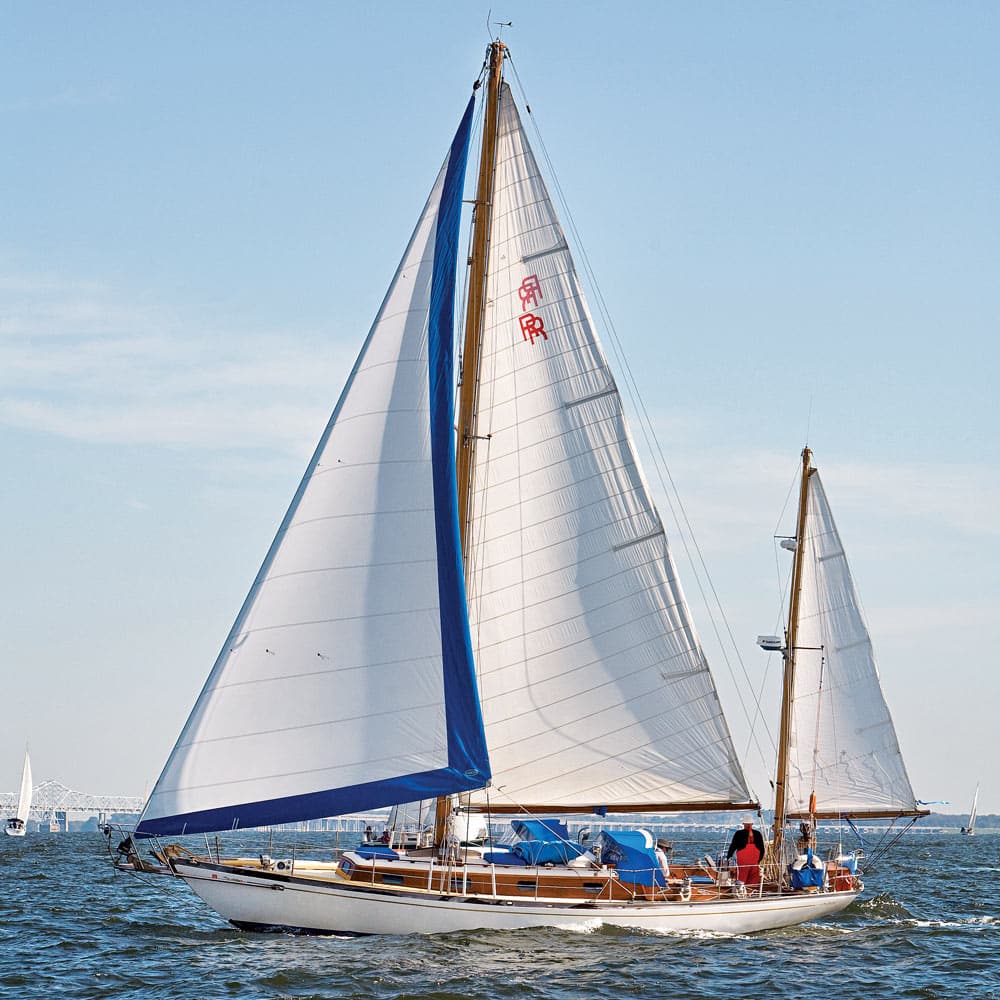
Philip Rhodes, the famous yacht designer, was always up for a challenge, but he might have surprised even himself when asked to create a three-cabin cruiser under 41 feet LOA. “You can’t do it,” Rhodes reportedly told David Toombs, founder of Lion Yachts in Greenwich, Connecticut. Toombs, a former Pan Am airline pilot, had discovered Cheoy Lee, the Hong Kong shipyard that produced great yachts for less, but then learned that shipping a boat longer than 41 feet would significantly raise the cost. “Just give it a try,” Toombs replied.
Sketching lines from his earlier hulls, adding copious amounts of teak, wood masts, and a unique interior with a starboard entry and companionway, Rhodes created the Reliant, a classic plastic that looked like a classic wood yacht. It became “perhaps the most admired and sought-after fiberglass boat from the board of Phil Rhodes,” writes Richard Henderson in his authoritative Philip L. Rhodes and his Yacht Designs (International Marine, 1993).
Forty-four Reliants were produced between 1963 and 1968, and most of them are still sailing, says Ben Stavis, whose father bought hull number four in 1964. Stavis has created an encyclopedic website on Reliants and their 156 “sister ships” — the Offshore 40s and Empire 40s that Cheoy Lee produced with mirror layouts and cheaper hardware. Over the years, Stavis, who moors Astarte in Stonington, Connecticut, has gathered a community of more than 100 owners.
As an early fiberglass design — 40 feet 9 inches in length, a 28-foot waterline, a 10-foot-9-inch beam and 5-foot-9-inch draft — the Reliant’s hull is massively thick. With solid teak interior, cabin trunk and deck, wood spars (most were yawls), bronze and stainless hardware, and 4 tons of lead ballast, the boat displaced 22,040 pounds. The combination yielded an oceangoer known both for its exquisitely balanced sheer lines and for its stable, easy-riding motion.
But it is the interior layout that owners rave about. Below the cockpit is a private owners suite with twin bunks, chart table, electronics and its own head with shower. Descending from the cockpit through a starboard hatch, curved steps lead to a companionway that goes forward on the right of center, with the galley along the starboard hull, and a large table/bunk to port. A V-berth forward has a second head. The layout provides “remarkable privacy” but also a sense of spaciousness rare in a narrow hull.
Henderson warns that the starboard hatch could flood during a knockdown, but Astarte is one of several that has a second, centered companionway that drops into the owners suite for offshore sailing.
The Reliant’s rugged foundation has allowed owners to modify, upgrade and keep their used prices quite high. Stavis is a proud papa, describing ingenious latches and covers, plumbing, electric and shipwright upgrades on Astarte, and the day on Long Island Sound when he met fetching Finnish physicist Marjatta Lyyra and blurted — while anchoring midsquall — a pickup line that led to marriage: “Why don’t we cruise forever?” A Reliant owner could well do that. Stavis has documented asking prices as high as $220,000, but $65,000 can snag a sailaway yacht for the ages.
Contributing editor Jim Carrier sails on Lake Champlain.








